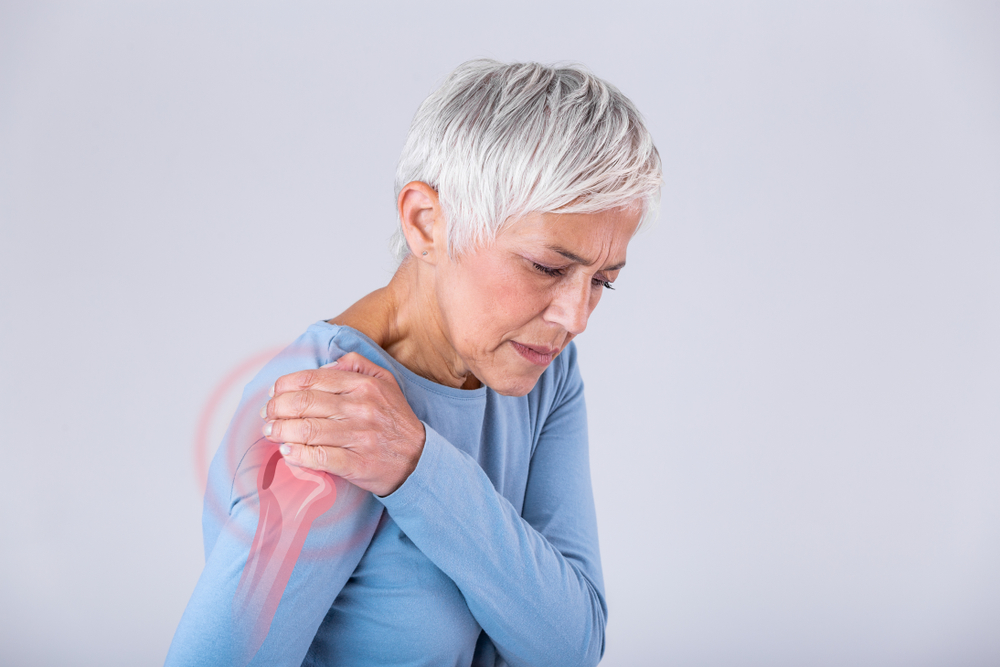Shoulder osteoarthritis (OA) affects the cartilage. While rotator cuff syndrome affects ligaments and tendons that stabilize the shoulder. Rotator cuff syndrome and shoulder osteoarthritis rarely come in isolation in age 60 and above.
Nearly 1 in 3 people over the age of 60 have some degree of shoulder osteoarthritis.
Causes of Shoulder Arthritis
Osteoarthritis in the shoulder can be two types: primary or secondary.
Primary osteoarthritis has no specific cause but is related to age, genetics, and sex. Women are more affected than men, and are usually over the age of 50.
Secondary osteoarthritis is caused by a previous injury like shoulder dislocations, infection, or rotator cuff tears. Participating in sports or doing heavy lifting can put you at a higher risk for shoulder OA.
Signs and Symptoms
The most common sign and symptoms associated with shoulder arthritis is pain. The pain most likely worsens with activities, especially those that require arm movements.
Loss of motion is another common complaint. The motion in the shoulder can feel like grinding, as bones rub on one another. This is caused by the breakdown of cartilage in the joint.
Depending on where the arthritis is in the shoulder, the pain will be different. If the glenohumeral joint is affected, the pain will be primarily in the back of the shoulder and feel like an ache. If the AC joint is affected, pain will be felt on top of the shoulder and can move to the neck.
As the osteoarthritis progresses, pain will be bothersome even during periods of rest and can interfere with sleep.
Treating Shoulder Osteoarthritis & Rotator Cuff Syndrome
Basic:
- Physical Therapy It focuses on restoring joint function which promotes healing and recovery. Is one of the best ways to help restore function. Usually the pain will limit the progression of the physical therapy.
- Non-Steroidal Anti-inflammatory Drugs (NSAIDs) The most commonly used NSAIDs are aspirin, ibuprofen (Advil, Motrin), Toradol, Naproxen. Celebrex, Voltaren and indomethacin. Although they help reduce pain, they come with lots of side effects from upset stomach to stomach bleeding.
- Steroid Injection It causes pain and flare ups at first but then helps reduce inflammation and possibly pain. Unfortunately, repeated use has been shown to destroy cartilage, making the symptoms worse down the road.
- Prolotherapy Prolotherapy is a sugar-based solution that is injected into an affected area and causes irritation which, in turn, triggers the body’s healing response. Usually needs 6-10 treatment sessions. It helps reduce pain for around 4-6 months.
Basic treatment options include: NSAIDs (non-steroidal anti-inflammatory drugs), steroid injections, and painkillers. They are limited in reducing pain or restoring function.
Advanced:
- Platelet Rich Plasma Platelet Rich Plasma (PRP) is concentrated platelets and plasma that is taken from a patient’s own blood. The PRP has growth factors that promote tissue repair and accelerate healing. Usually needs 2-3 treatment sessions. It helps reduce pain for around 12-18 months.

If you suffer from shoulder pain and osteoarthritis, contact Arthritis VIP today.
